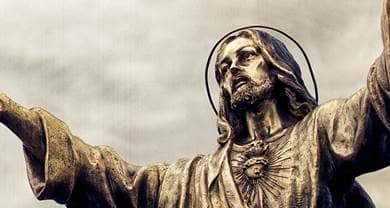- Trending:
- Pope Leo Xiv
- |
- Israel
- |
- Trump
- |
- Social Justice
- |
- Peace
- |
- Love

RELIGION LIBRARY
Lutheran
Symbolism
In many ways, though Luther challenged the basic assumptions of Roman Catholic theology, he was a conservative reformer. He had a sense that the reform would be more successful if it proceeded by persuasion rather than force, and if it proceeded not too quickly, to give average church-goers time to adjust. In addition, his basic scriptural principle for church practice was that historical traditions that did not contradict scripture were fine. (Other reformers argued that only those traditions found in scripture could be continued.)
What this means is that one is far more likely to mistake a Lutheran church for a Roman Catholic Church than to mistake a Presbyterian or Methodist Church for a Roman Catholic Church. The statues of saints and the paintings of scenes from the Bible and from Christian history were not stripped out of churches in Lutheran territories to the extent that they were in Calvinist territories. Lutheran symbolism, therefore, is closer to Catholic symbolism.
One exemplary instance of Lutheran symbolism and aesthetics is a triptych over the altar in a church in Weimar, Germany painted by Lucas Cranach the Elder (1472-1523), and completed by his son, Lucas Cranach the Younger. The colors of the triptych are warm and vibrant, the scenes depicted quite graphic. The painting attempts to capture the main elements of Luther's theology. The painting is dominated by a large depiction of Christ on the cross in the middle panel. Behind him Moses is shown holding the tablets with the Ten Commandments. A man is shown being chased into hell by a skeleton with a spear, representing the condemnation of all humans under the law. Perhaps the most striking feature of the painting is the depiction of Luther, standing at the foot of the cross holding an open Bible (symbolizing the idea that salvation comes only through the promises of forgiveness found in scripture). A stream of blood from the side of Jesus, where he was pierced by the spear of a Roman soldier, cascades down in an arc onto Luther's head. Luther's sins have been forgiven by the sacrifice made by Christ on the cross.
The dominant symbol for Lutherans is the cross. Sometimes this can be a crucifix (a cross with Christ on it, symbolizing Jesus' sacrifice for us), but it is often an empty cross (symbolizing Jesus' resurrection). Other symbols frequently seen in Lutheran churches are triangles, trefoils, and fleur-de-lis, all symbolizing the Trinity, an open book symbolizing the word of God, and a fish (the Greek words "Jesus Christ, Son of God, Savior" form the acronym of the word fish, and this is one of the earliest and most popular symbols of Christians). Sometimes one sees Luther's seal (a rose with a heart in the center and a cross in the center of the heart). The Evangelical Lutheran Church in America has as its logo a stylized globe with the shape of the cross in the middle.










